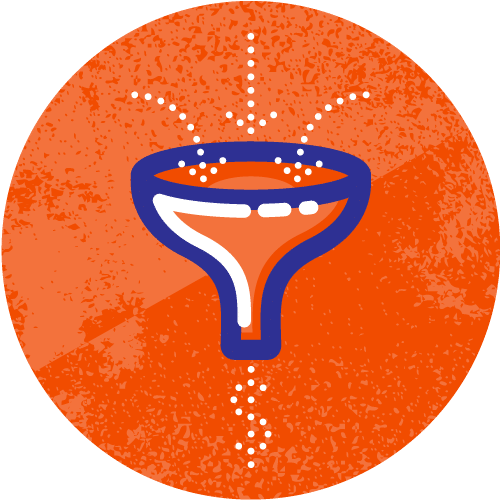To paraphrase marketing pioneer John Wanamaker: Is your agency wasting half the money you spend on new business development… but you don’t know which half?
You’re not alone; many agencies spend too much on sales, relative to the results they get. But you can grow your agency while spending less on sales… once you know where to look.
If your agency isn’t getting the bizdev Return on Investment (ROI) you want, it’s time to improve your results—and reduce your Cost of Sales. But how?
Start by calculating your Cost of Sales, and then consider where things aren’t working. You’ll stop activities that don’t work and become more efficient about what you continue doing.
But where to start looking? For my 15 agency-specific ideas on how to spend less on sales—without [necessarily] hurting your growth—read on!
How to Spend Less on Sales
Want to spend less on sales and selling? Consider my 15 business development tips to help you improve your sales ROI:
- Specialize by client industry vertical. You don’t have to specialize by client vertical… but my industry-specialist clients tend to be more profitable and less stressed than the generalists. (If you aren’t ready to become a specialist agency, consider the other 14 tips in this list.)
- Strengthen your agency’s positioning, to build your pricing power. Higher-paying clients require more effort to close… but the total sales investment (per unit of revenue) is often lower. You can improve your positioning by choosing to specialize, by adding case studies with big results, and improving your reputation as a thought leader.
- Define a clear target persona(s). If people on your team aren’t clear about your ideal target, you’ll waste time on prospects who don’t fully benefit from your help—or who don’t want to pay for it. Double-check your target persona annually, since it can evolve over time. For example, I helped an Executive Coaching client uncover a new niche their agency had stumbled into—with enjoyable, well-budgeted clients.
- Focus exclusively on your target personas(s). Knowing your target isn’t enough; you must take action. It can be scary to say “no” to prospective clients who have money—but I recommend doing it sooner than later if the prospects aren’t a strong match. Why? Because they’ll eventually realize you aren’t a great match for them… which makes them likely to back out later.
- Commit to a ‘fast-fail’ sales process. If you can close deals faster, you won’t need to spend [relatively] as much on sales. For a deeper dive, see my article on how to create a ‘fast-fail’ sales process. When you spend less time on poor-fit prospects, you can spend more time on people who need and want your agency’s help.
- Build your recurring revenue percentage. If you aren’t always replacing clients, you won’t have to spend as much time on sales. Some services—like SEO, PPC, and marketing automation—lend themselves to retainers. Other services—like video production, web development, and branding—are less retainer-oriented, but there are ways to turn those into Monthly Recurring Revenue (MRR). Consider the pros and cons of retainers before you expand here.
- Retain your clients longer. If you don’t have to replace clients constantly, you won’t need to invest as much time and money on sales to produce each unit of revenue. To boost client retention: prioritize Warmth & Competence, make the client the Hero (with your agency as the Helper), and pay attention to client retention rates (benchmark: ideally retain 80-90% annually).
- Get picky about when you send a proposal. Don’t jump to send a proposal just because a prospect requests it! Be sure to qualify them first, before investing time in a proposal. This may include doing sales pre-qualification surveys, requiring all key stakeholders to attend the exploratory call(s), and adding an extra “are we on the same page?” call before you create a proposal. Aspirationally, your proposal-to-close rate is 50-70%; much lower means you’re likely over-proposing… and much higher means you’re likely undercharging.
- Don’t pitch RFPs and other long-shot sales opportunities. It’s rarely a good use of your time to pitch a Request for Proposal (RFP). If you’re in an industry where cattle-call RFPs are the norm, you need to decide if you’re willing to participate… or if you’ll stand firm to focus on smaller (but easier to close) non-RFP sales opportunities.
- Raise your prices. It’s easier to raise prices when you improve your positioning, but nothing’s stopping you from raising prices today. Clients tend to assume that “more expensive = higher value.” If you do the “three options” proposal, try making your current “middle” option your cheapest option (and add a new “most expensive” option)—and see what happens. All things considered, sales costs on larger deals tend to be cheaper-per-unit than sales costs on smaller deals. Here’s more on raising prices.
- Divide your sales team into specialized roles. Once you have more than one salesperson, not everyone needs to be a “full-stack” salesperson (from prospecting to closing). You may designate some people to focus on “inside sales” (responding to inbound opportunities) versus “outside sales” (finding cold opportunities). You might also hire a business development representative (BDR) or other lower-level team member to qualify prospects before turning them over to an owner or other higher-paid salesperson. Here’s more on chunking-out the sales process.
- Don’t tolerate under-performing salespeople. Give them an opportunity to improve, but don’t keep them forever. And be sure to use a new-hire ramp-up plan, so everyone’s on the same page about what success looks like. How long should you give people? If your agency focuses on selling to small businesses, you should see sales results within 3-6 months. If you focus on enterprise clients, you should see sales results in 9-18 months… or sooner if you hire someone with lots of existing connections in the target industry.
- Ensure your sales incentives are aligned to your business goals. Be sure you’re rewarding high-quality opportunities rather than mere volume. If you’re not sure about incentive alignment, ask yourself—what am I encouraging the salesperson to do more of and less of? Are those what I want them to do? If not, what needs to change? This includes team vs. individual incentives—if you want people to work as a team, don’t use individual-focused incentives.
- Build your referral program(s). Referrals tend to be lower-cost sales opportunities, since the referred party is often “pre-sold” on working with your agency. Your referral programs might focus on other agencies, industry influencers, software platforms, or a combination of those and others. This fits into the “Partnerships” side of the Biz Dev role category.
- Improve sales attribution. Be sure someone asks prospective clients where they came from. Using a marketing automation system like HubSpot helps you automate the process, so that you don’t need to rely solely on a prospect’s memory.
Worried that spending less on sales means you’ll grow slower? That’s not necessarily the case—read on.
Does Reducing the Cost of Sales = Slower Growth?
Your goal here is to reduce your agency’s Cost of Sales—that is, the percentage of revenue you’re investing in selling your services—not reduce the absolute amount you spend on business development. The absolute amount will likely increase as you increase revenues, even as (ideally) the percentage cost goes down.
To put it another way, your goal is to spend less to sell each unit of revenue (e.g., dollar, euro, pound, etc.). For benchmarks, see my article on Cost of Sales in general.
Ready to make it all happen? Read on.
What Next: Spending Less on Sales at Your Agency
You don’t need to apply all 15 tips at once! Pick a couple to start—for instance, being pickier about proposals (for a quick win) and getting clear on your target persona (for longer-term results).
Which agency team members should be involved in the optimization process? Ideally at least one owner, as well as members from the Biz Dev team (marketing, sales, and partnerships). Invest the time now, for better results later. And if you’re like my one-on-one help to accelerate your optimization efforts, please get in touch.
Question: What will you change next to reduce your agency’s Cost of Sales?


